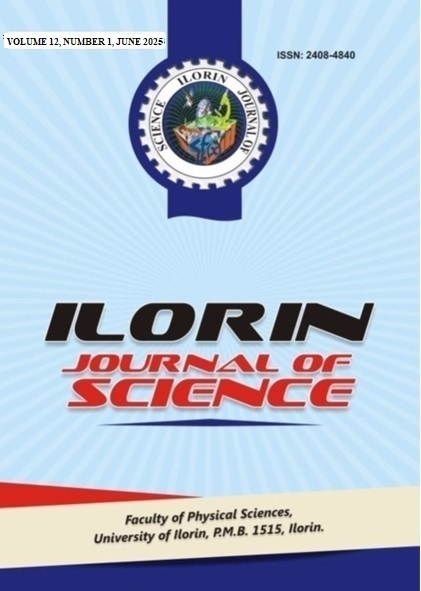Phytochemical, Anti-oxidant and In-vitro Anti-diabetic Evaluations of Aqueous and Boiled Leaf Extracts of Thaumatococcus daniellii (Benth)
Keywords:
Thaumatococcus daniellii, phytochemistry, Antioxidant activity, Anti-diabetic activityAbstract
Thaumatococcus daniellii (Benth), commonly referred to as the "miracle fruit plant," is traditionally used in cooking, where its leaves serve as natural food wrappers and flavour enhancers. This study investigate the scientific benefits of using T. daniellii in cooking by analyzing the phytochemistry, antioxidant, and in vitro anti-diabetic properties of the fresh leaf boiled extract (FBE) and dried leaf aqueous extracts (DAE). Quantitative Phytochemical screening was done using spectrophotometric method. The antioxidant potential was evaluated through assays such as 2,2-Diphenyl-1-picrylhydrazyl (DPPH) radical scavenging, 2,2'-azino-bis(3-ethylbenzothiazoline-6-sulphonic acid) (ABTS) radical scavenging, ferric-reducing antioxidant power (FRAP), peroxide-mediated antioxidant (PMA) activity, and metal chelating activity (MCA). The in vitro anti-diabetic potential was assessed using α-amylase inhibition assays to determine the potency of the extract in modulating glucose metabolism. Phytochemical analysis revealed distinct differences between the extracts. FBE had lower flavonoid (0.368 ± 0.023 mg QE/g) and alkaloid (642.44 ± 15.56 mg AE/g) content than DAE (0.472 ± 0.00523 mg QE/g and 665.78 ± 35.29 mg AE/g, respectively). Conversely, FBE showed higher tannin (278.13 ± 27.36 mg TAE/g) and phenol (0.048 ± 0.003 mg GAE/g) levels compared to DAE. Antioxidant assays highlighted varied results. FBE exhibited higher DPPH radical scavenging activity (36.72 ± 1.84%) and ferric-reducing antioxidant power (0.1895 ± 0.007 mg Fe²⁺/g) than DAE, while DAE demonstrated superior peroxide-mediated antioxidant activity (0.069 ± 0.0002 mg AAE/g). Metal chelating activity was similar for both extracts, and neither showed significant ABTS radical scavenging activity. The α-amylase inhibition assay revealed DAE's significant higher in vitro anti-diabetic potential (55.56 ± 2.26%) compared to FBE (12.82 ± 2.56%), suggesting that boiling diminishes this property.This study demonstrates that T. daniellii retains significant health-promoting bioactive properties, regardless of preparation method, making it a valuable addition to culinary and therapeutic applications.





